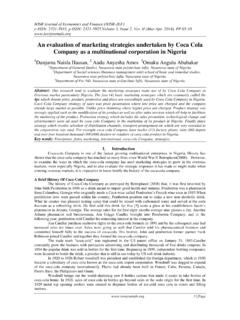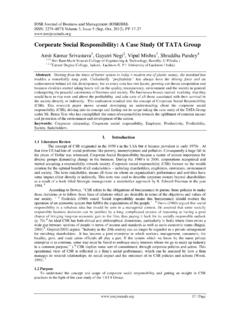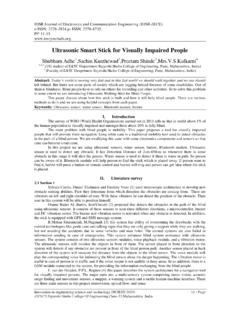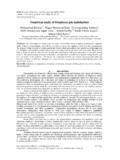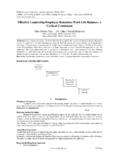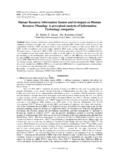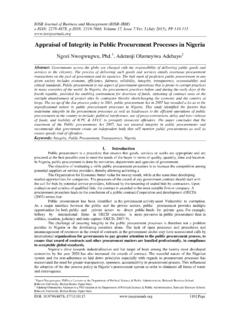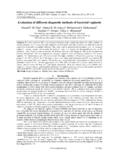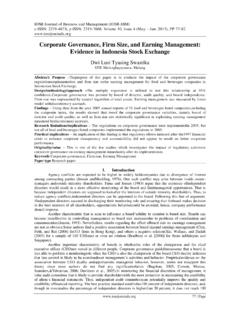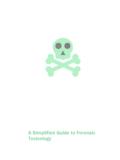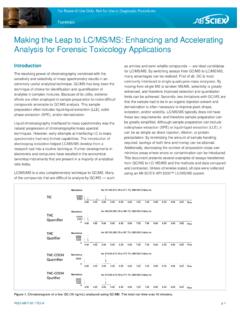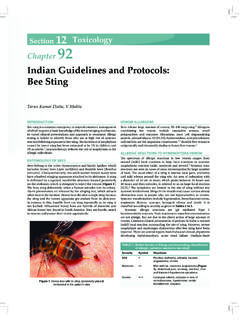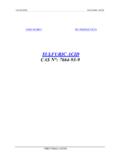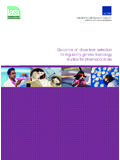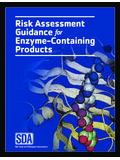Transcription of Extraction of Curcumin - IOSR Journals
1 IOSR Journal of Environmental Science, toxicology and Food Technology (IOSR-JESTFT) ISSN: 2319-2402, ISBN: 2319-2399. Volume 1, Issue 3 (Sep-Oct. 2012), PP 01-16 1 | Page Extraction of Curcumin Anamika Bagchi (Department of Food Technology, Techno India/ West Bengal University of Technology, India) ABSTRACT : Curcumin due to its various medicinal, biological, pharmacological activities is high on demand and has high market potential, high cost. Since Curcumin has variety of uses, extracting it in a less expensive method other Super Critical Fluid Extraction is the main aim or objective of this work.
2 Usage of food grade solvents is a main prerequisite of this work and optimization of the parameters in order to find an effective means of Extraction sum ups the cause of this project work. Besides working on the Extraction of Curcumin , other properties such as Curcumin s antioxidant, antimicrobial properties are to be envisaged upon. This project work mainly deals with the topic on Extraction of Curcumin from its common source turmeric, using an effective low cost method of solvent Extraction .
3 Different solvents are used either in their pure form or being mixed in definite ratio s, while taking into consideration of other parameters such as particle size, time, temperature, solid: solvent ratio. The qualitative analysis of its antimicrobial property is also done along with the product development of Cake. Keywords - Antiflatulent, Antifibrotic, Antimutagenic, Carcinogenesis, Ulcerogenic I. Introduction The turmeric (Curcuma longa) plant, a perennial herb belonging to the ginger family, is cultivated extensively in south and southeast tropical Asia.
4 The rhizome of this plant is also referred to as the root and is the most useful part of the plant for culinary and medicinal purposes. The most active component of turmeric is Curcumin , which makes up 2 to 5% of the spice. The characteristic yellow color of turmeric is due to the curcuminoids, first isolated by Vogel in 1842. Curcumin is an orange yellow crystalline powder practically insoluble in water. The structure of Curcumin (C 21 H 20 O 6) was first described in 1910 by Lampe and Milobedeska and shown to be diferuloylmethane.
5 Turmeric is used as a dietary spice, coloring agent in foods and textiles, and a treatment for a wide variety of ailments. It is widely used in traditional Indian medicine to cure biliary disorders, anorexia, cough, diabetic wounds, hepatic disorders, rheumatism, and sinusitis. Turmeric paste in slaked lime is a popular home remedy for the treatment of inflammation and wounds. For centuries, Curcumin has been consumed as a dietary spice at doses up to 100 mg/d. Extensive investigation over the last five decades has indicated that Curcumin reduces blood cholesterol.
6 (Aggarwal et al., 2006).Turmeric was described as C. longa by Linnaeus and its taxonomic position is as follows: Class Liliopsida Subclass Commelinids Order Zingiberales Family Zingiberaceae Genus Curcuma Species Curcuma longa The wild turmeric is called C. aromatica and the domestic species is called C. longa. For the last few decades, extensive work has been done to establish the biological activities and pharmacological actions of turmeric and its extracts. Curcumin (diferuloylmethane), the main yellow bioactive component of turmeric has been shown to have a wide spectrum of biological actions.
7 These include its anti-inflammatory, antioxidant, anticarcinogenic, antimutagenic, anticoagulant, antifertility, antidiabetic, antibacterial, antifungal, antiprotozoal, antiviral, antifibrotic, antivenom, antiulcer, hypotensive and hypocholesteremic activities. Its anticancer effect is mainly mediated through induction of apoptosis. It s anti-inflammatory, anticancer and antioxidant roles may be clinically exploited to control rheumatism, carcinogenesis and oxidative stress-related pathogenesis. Clinically, Curcumin has already been used to reduce post-operative inflammation.
8 Safety evaluation studies indicate that both turmeric and Curcumin are well tolerated at a very high dose without any toxic effects. Thus, both turmeric and Curcumin have the potential for the development of modern medicine for the treatment of various diseases. (Chattopadhyay et al., 2004) Chemical composition of turmeric Turmeric contains protein ( ), fat ( ), minerals ( ), carbohydrates ( ) and moisture ( ). The essential oil ( ) obtained by steam distillation of rhizomes has a-phellandrene (1%), sabinene ( ), cineol (1%), borneol ( ), zingiberene (25%) and sesquiterpines (53%)5.
9 Curcumin Extraction of Curcumin 2 | Page (diferuloylmethane) (3 4%) is responsible for the yellow color, and comprises Curcumin I (94%), Curcumin II (6%) and Curcumin III ( )6. Demethoxy and bisdemethoxy derivatives of Curcumin have also been isolated7 (Figure 1). Curcumin was first isolated in 1815 and its chemical structure was determined by Roughley and Whiting in 1973. It has a melting point at 176 177 C; forms a reddish-brown salt with alkali and is soluble in ethanol, alkali, ketone, acetic acid and chloroform.
10 (Chattopadhyay et al., 2004) Curcumin (also known as Curcumin I) occurs naturally in the rhizome of Curcuma longa, which is grown commercially and sold as turmeric, a yellow orange dye. Turmeric contains Curcumin along with other chemical constituents known as the curcuminoids . The major curcuminoids present in turmeric are demethoxycurcumin ( Curcumin II), bisdemethoxycurcumin ( Curcumin III), and the recently identified cyclocurcumin. Commercial Curcumin contains Curcumin I (~77%), Curcumin II (~17%), and Curcumin III (~3%) as its major components.
